The Legend of Zelda is the longest-running action-adventure series. It has 19 canon games and three remakes. The total is 22 Zelda games.
We’re diving into the most crucial action-adventure series. Breath of the Wild alone is the pinnacle of Nintendo IPs.
Every Zelda Game in Chronological Order

- The Legend of Zelda – 1986
- Zelda II: The Adventure of Link – 1987
- The Legend of Zelda: A Link to the Past – 1991
- The Legend of Zelda: Link’s Awakening – 1993
- The Legend of Zelda: Ocarina of Time – 1998
- The Legend of Zelda: Majora’s Mask – 2000
- The Legend of Zelda: Oracle of Seasons & Oracle of Ages – 2001
- The Legend of Zelda: A Link to the Past & Four Swords – 2002
- The Legend of Zelda: The Wind Waker – 2002
- The Legend of Zelda: Four Swords Adventure – 2004
- The Legend of Zelda: The Minish Cap – 2004
- The Legend of Zelda: Twilight Princess – 2006
- The Legend of Zelda: Phantom Hourglass – 2007
- The Legend of Zelda: Spirit Tracks – 2009
- The Legend of Zelda: Ocarina of Time 3D – 2011 (Remake)
- The Legend of Zelda: Skyward Sword – 2011
- The Legend of Zelda: A Link Between Worlds – 2013
- The Legend of Zelda: Majora’s Mask 3D – 2015 (Remake)
- The Legend of Zelda: Tri Force Heroes – 2015
- The Legend of Zelda: Breath of the Wild: 2017
- The Legend of Zelda: Link’s Awakening – 2019 (Remake)
The Legend of Zelda titles follow three alternate timelines and different reincarnations of Link and Zelda. Here they are:
The Legend of Zelda – 1986 (Consoles & Handheld)

The Legend of Zelda debuted in 1986 for the Famicom Disk System, a Nintendo home console. It’s currently available in the Switch Online NES Library.
The original game introduces Hyrule, the fantasy land, and Link, a young hero. The adventure involves collecting eight fragments of the Triforce of Wisdom to rescue Princess Zelda from Ganon.
A top-down perspective follows Link through dungeons and open areas. Link slowly collects weapons and tools to unlock puzzles and defeat enemies. However, there’re few instructions and a certain degree of freedom to complete puzzles and explore the world.
Zelda II: The Adventure of Link – 1987 (Consoles & Handheld)

The Adventure of Link debuted for the FAMINOM in 1987 before reaching the NES in 1988. It’s currently available in the Switch Online NES Library
The second entry involves the same Link reincarnation rescuing Princess Zelda from a sleeping spell. It’s a direct sequel to the first game.
The gameplay focuses on side-scrolling sections, role-playing elements, and puzzles. The game added experience points and a leveling system, unique in the series. Lastly, the title introduced the recurrent antagonist Dark Link.
The Legend of Zelda: A Link to the Past – 1991 (Consoles & Handheld)
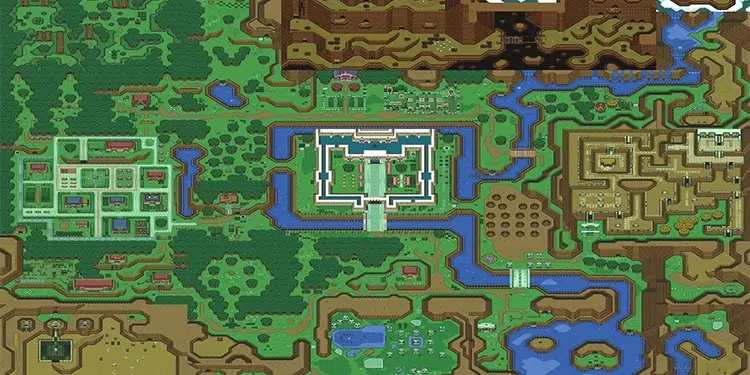
The third entry debuted for SNES in 1991. It’s available in the Nintendo 3DS Virtual Console and the Switch Online SNES Library.
The game introduced staple Zelda features like multi-level dungeons, dynamic settings with light & shadows, the Master Sword, the Grappling Hook, and a semi-open world design.
A Link to the Past is a prequel to Legend of Zelda. The princess awakes a younger Link with a telepathic message, and the journey involves saving Zelda from a Hyrule Castle dungeon and defeating the evil wizard Agahnim.
The Legend of Zelda – Link’s Awakening – 1993(Handheld)
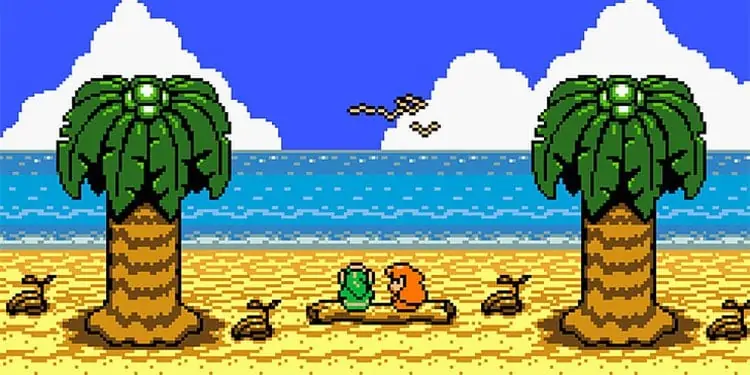
Link’s Awakening debuted in 1993 for the Game Boy. It’s currently available on the 3DS Virtual console.
The fourth entry goes after “A Link to the Past.” However, it doesn’t occur in Hyrule and doesn’t feature Princess Zelda or the Triforce relic. Also, it’s the only Zelda game that features Yoshi.
Here, Link is lost on the Koholint Island, guarded by the Wind Fish, a whale-like God. The player must fight monsters, solve a vast array of puzzles and explore the world to find a way out.
The Legend of Zelda: Ocarina of Time – 1998 (Consoles)

The beloved Ocarina of Time debuted in 1998 for Nintendo 64. You may find it in the Switch Online N64 Library.
As the first Zelda title with 3D graphics, it evolved the franchise’s combat, exploration, and puzzle-solving. The immediate result was a more complex third-person puzzle adventure with a simple targeting system.
The story follows a new Link on the “main timeline.” The hero follows a quest to stop the evil King Ganondorf. He must travel through time, navigate dungeons, and explore the “Overworld” (the area outside Hyrule). Notably, the critical “Ocarina of Time” item has time-wrapping abilities for puzzle-solving.
The Legend of Zelda: Majora’s Mask – 2000 (Consoles)

Majora’s Mask debuted for Nintendo 64 in the year 2000. The story happens two months after “Ocarina of Time” in the parallel world “Termina.” Link must prevent the Moon from falling and destroying the world in a three-day cycle.
The game introduced two critical concepts. First, the three-day cycle repeats itself until Link accomplishes his goal. The second is multiple masks that transform Link into different beings with different skills.
Link also has the Ocarina; he can control time, open passages, solve puzzles, and travel back to the first day of the cycle.
The Legend of Zelda: Oracle of Seasons & Oracle of Ages – 2001 (Handheld)

Oracle of Seasons & Oracle of Ages count as two games in a single bundle. It debuted in 2001 for the Game Boy Color. It’s currently available for the Nintendo 3DS Virtual Console.
The plot happens after Link’s Awakening. The Triforce transports Link to Holodrum to save the Oracle of Seasons, Din, from a beast. In the next game, Oracle of Ages, the Triforce transports Link to Labrynna to save goddess Nayru from an evil sorcerer.
The gameplay is usual, and the critical items are the Rod of Seasons and the Harp of Ages. The first controls seasons in Holodrum; the latter lets Link travel in time to Labrynna.
The Legend of Zelda: A Link to the Past & Four Swords – 2002 (Handheld)
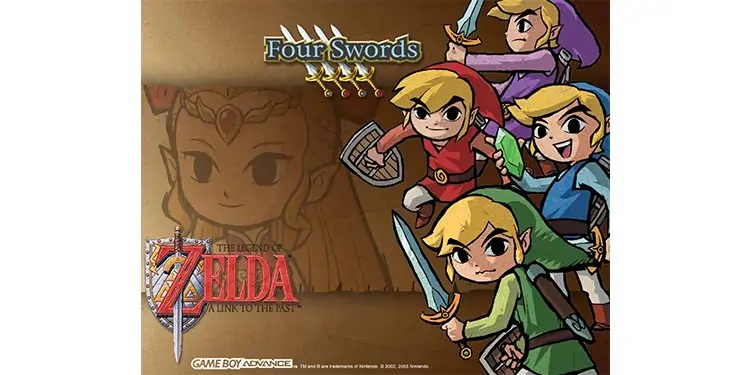
A Link to the Past & Four Swords debuted for Game Boy Advance in 2002. In 2011, it debuted the DSiWare Nintendo service with extra content.
A Link to the Past is about wizard Agrahmin releasing Ganon from prison, so Link must defeat both antagonists. The next game is Four Swords, which continues Ocarina of Time. It’s about beating the secondary antagonist Vaati.
The gameplay is similar to the original game -a sword&shield overhead adventure. However, Four Swords allowed a two or 4-player co-op.
The Legend of Zelda: The Wind Waker – 2002 (Console & Handheld)

Wind Waker debuted in 2002 for GameCube. It changed the graphic style to flimsy and cartoony graphics.
The game happens on a group of islands in the Vast Sea. Link is trying to save her sister from Ganondorf and finds himself in a conflict for the sacred relic Triforce.
The gameplay is similar to previous titles, but Link can sail. Then, the unique mechanic is the Wind Waker, a baton that controls the wind players can use for exploring, sailing, and solving puzzles.
The Legend of Zelda: Four Swords Adventure – 2004 (Console)

Four Swords Adventures debuted for GameCube in 2004 and introduced various game modes.
The main mode is “Hyrulean Adventure,” a co-op multiplayer campaign featuring the classic Zelda gameplay. Another mode is “Shadow Battle,” a competitive multiplayer mode. Lastly, “Navi Tracker” is a rally race present in the Japanese version.
The plot happens centuries after Majora’s Mask. Link must defeat Ganondorf’s alternate incarnation (The Dark Beast Ganon).
The Legend of Zelda: The Minish Cap – 2004 (Handheld)

The Minish Cap debuted in 2004 for Game Boy Advance. It’s also available for the Wii U Virtual Console and the 3DS Virtual Console.
The plot revolves around the legend of the Four Swords. It deals with the origins of the Four Swords and Vaati. You explore the story on an open-world map, but Link has to unlock abilities to go to certain areas.
The unique mechanic is the Ezlo cap, an item that shrinks Link to the size of a Minish, a Hyrule bug-raze. It’s an essential tool to complete the game’s puzzles and multi-level dungeons.
The Legend of Zelda: Twilight Princess – 2006 (Console & Handheld)
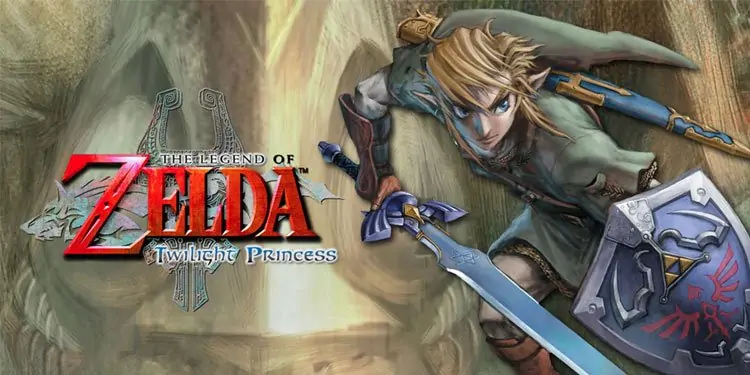
Twilight Princess debuted in 2006 for GameCube and Wii. It’s the first Zelda title for Wii, and it introduced great graphical, performance, and AI improvements. It also introduced motion controllers.
The story happens after Majora’s Mask and before The Four Swords Adventures. Link tries to save Hyrule from a parallel dimension corrupting the land (The Twilight Realm). Midna, a tiny imp, helps Link on the journey.
The unique mechanic is the Twilight Realm. Link can enter the realm as a wolf. The Wolf can bite, dodge, move faster, dig holes to create passages, track with his senses, hear tortured souls and fight against ghosts.
The Legend of Zelda: Phantom Hourglass – 2007 (Handheld)
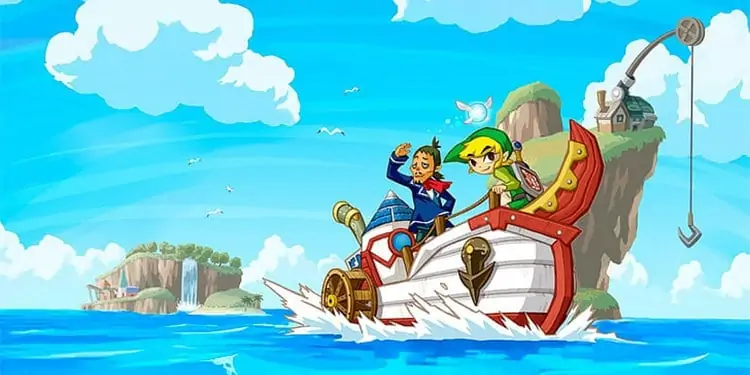
Phantom Hourglass debuted for Nintendo DS in 2007. Notably, it used the DS’s top screen as a map while Link sails, and players can take notes on the map.
The plot is about Link saving his friend, Tetra, from Bellum, another secondary antagonist. The setting flooded Hyrule, now part of the Great Sea. So, he needs the help of Captain Linebeck to travel across the world.
The key mechanic is the Temple of the Ocean King. This is the game’s central dungeon, and players must visit the place multiple times to get sea charts and unlock new areas until the end.
The Legend of Zelda: Spirit Tracks – 2009 (Handheld)

Spirit Tracks debuted for Nintendo DS in 2009. The plot happens after Phantom Hourglass, and the setting is a flooded Hyrule, known in the game as “New Hyrule.”
You play as an engineer Link, capable of driving the steam train. However, the tracks are fading, and both Link and Zelda must restore the Spirit Tracks and the Spirit Tower to restore the trails and take Zelda to her original body.
So, you travel on a steam train alongside “spirit Zelda.” She can possess enemy suits of armor and Phantom warriors. Players control Link outside the train and possess Phantoms with the stylus pen.
The Legend of Zelda: Ocarina of Time 3D – 2011 (Handheld – Remake)
Ocarina of Time 3D is a remake of the iconic Zelda game. It debuted for the Nintendo 3DS in 2011.
The game has mirrored versions of the Ocarina dungeons, updated graphics, added effects, and better performance.
The Legend of Zelda: Skyward Sword – 2011 (Console)
Skyward Sword debuted for Nintendo Wii in 2011. Currently, it’s available on the Wii U Virtual console. There’s also a 2021 high-definition remaster for Nintendo Switch.
Link navigates Skyloft, a floating island, and the land above. The gameplay focuses heavily on environmental storytelling, dungeon puzzles, and exploration. Combat gameplay works through the Wii MotionPlus peripheral.
Lastly, the story details the origins of the Master Sword. Because it’s the beginning of the Zelda continuity, it also explores the Triforce and the Gods of the fictional world.
The Legend of Zelda: A Link Between Worlds – 2013 (Handheld)
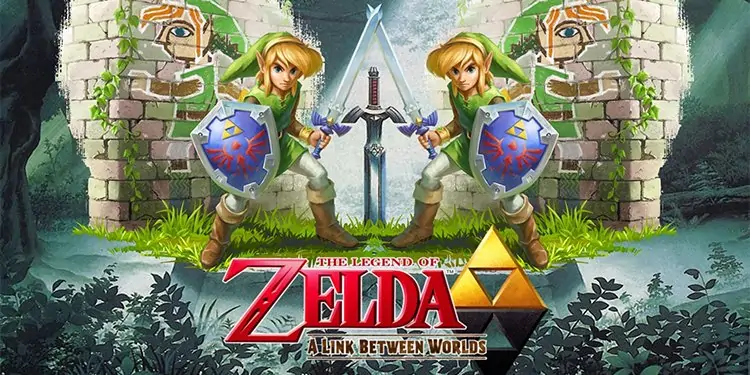
A Link Between Worlds debuted for Nintendo 3DS in 2013. It’s considered the spiritual successor of A Link to the Past. However, timeline-wise, the plot is between Oracle of Ages / Oracle of Seasons and Tri Force heroes.
A new Link travels to restore peace to Hyrule. He must defeat evil sorceress Yuga and rescue Princess Zelda from the parallel world of Lorule. Yuda aims to resurrect demon king Ganon.
The game’s unique ability allows Link to merge into walls like a 2D painting. It’s necessary to reach areas and travel between Lorule and Hyrule.
The Legend of Zelda: Majora’s Mask 3D – 2015 (Handheld – Remake)
Majora’s Mask 3D is a 2015 remake of the iconic Zelda title, and it debuted for Nintendo 3DS.
It features 3D visuals, new environmental textures, 30 fps, gyroscopic aiming, and a new touchscreen interface. There’re also minor changes in questlines, mechanics, and skills.
The Legend of Zelda: Tri Force Heroes – 2015 (Handheld)

Tri Force Heroes debuted for Nintendo 3DS in 2015. Once again, Greezo took care of the title. It features a co-op campaign supporting up to three friends simultaneously and wirelessly.
The plot follows the same Link we saw in A Link Between Worlds. The hero or heroes go to the Hytopia kingdom to lift a curse from Princess Styla.
Gameplay-wise, each player can control a differently colored Link. They join forces to solve puzzles in a multi-layered dungeon across various levels.
The Legend of Zelda: Breath of the Wild: 2017 (Console)
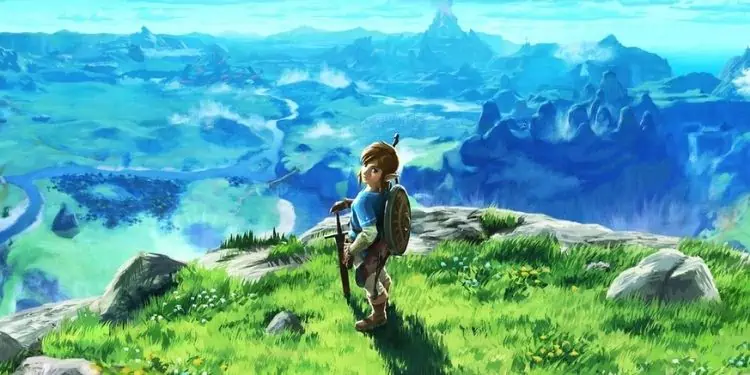
Breath of the Wild debuted for Nintendo Switch and Wii U in 2017, and it’s the 19th and latest main series installment.
Similarly, it is the last Zelda game, timeline-wise. It happens thousands of years after every other game. Link awakens from a hundred-year slumber on a new quest to defeat Ganon.
The game delivers a massive open world with a sandbox approach and action-RPG combat. The environment is highly reactive, and the systems are vast—for instance, crafting, cooking, weather, night&day cycles, and more.
The Legend of Zelda: Link’s Awakening: 2019 (Console – Remake)

2019’s Link’s Awakening is a remake of the 1993 title. It debuted for the Nintendo Switch.
Character models are like toys, and maps are like dioramas. Additionally, it has customizable dungeons, and players can complete their own or others’ creations for rewards.

